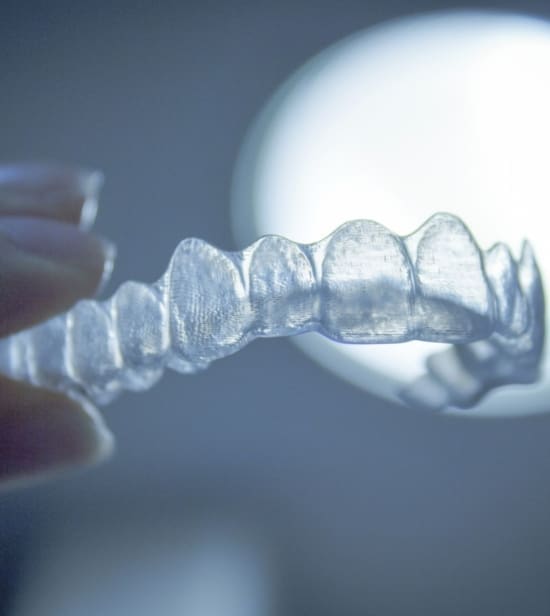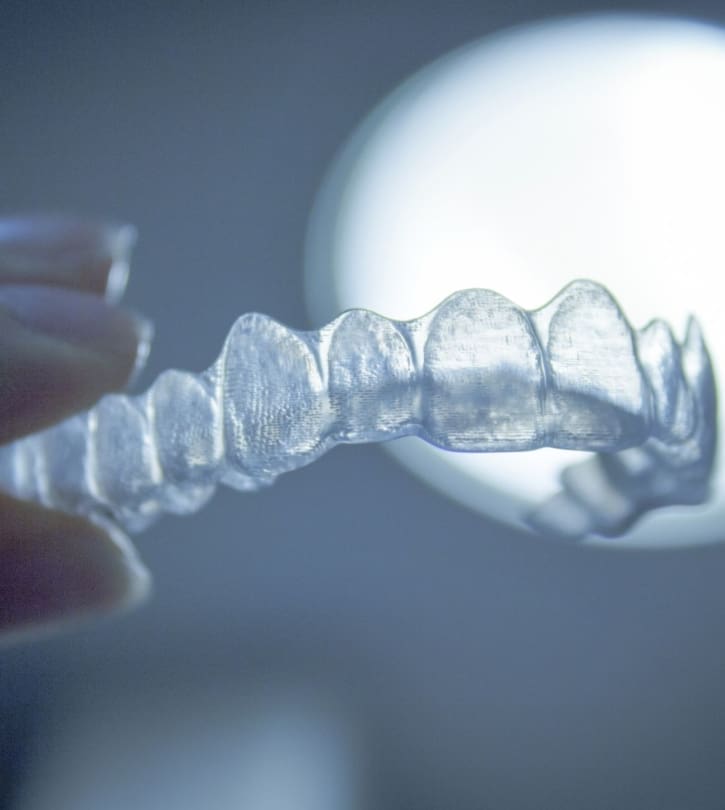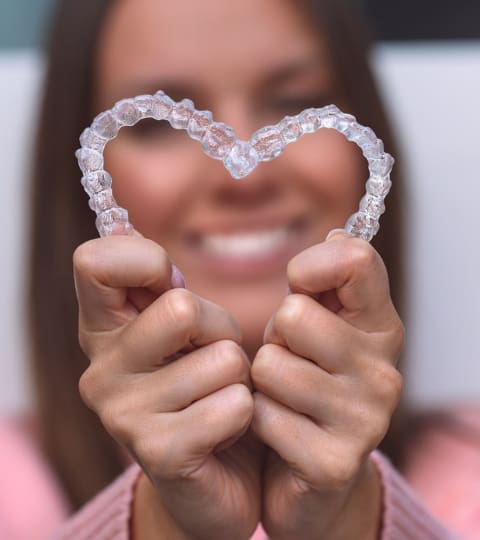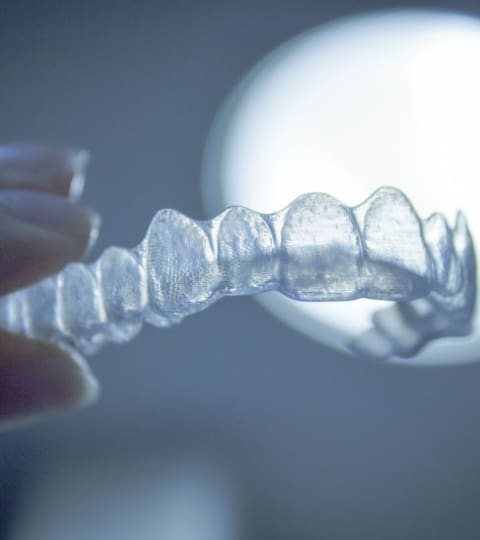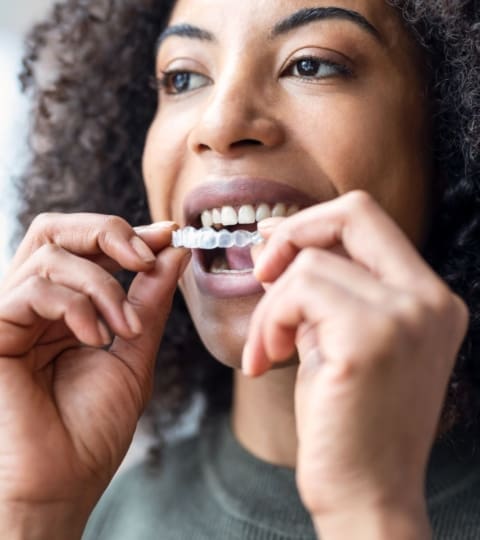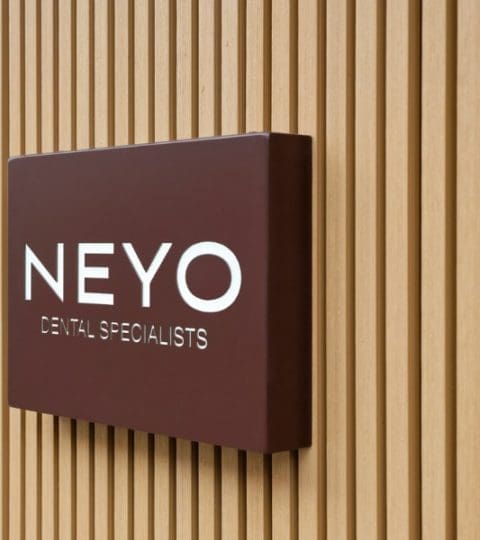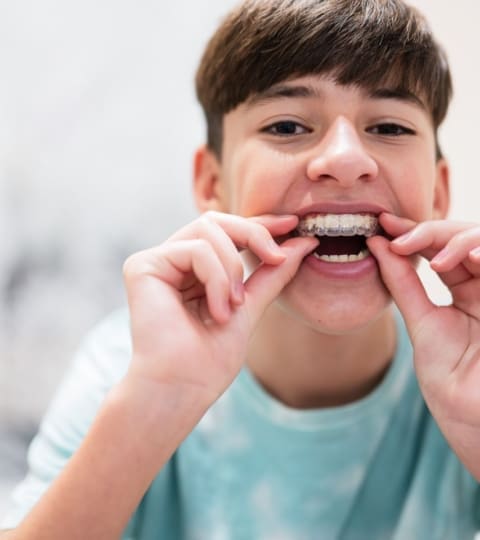Is Invisalign suitable for every orthodontic problem?
Invisalign can now be used for many orthodontic problems and is often used to tackle even the most severe and complex issues. Like any orthodontic appliance Invisalign has its strengths and weaknesses and there are certain types of tooth movements that Invisalign struggles with. Even in these cases we may still be able to use Invisalign because our experienced orthodontist can incorporate elements from other types of braces so you can benefit from the best each appliance has to offer.
Will I need to wear a retainer after the Invisalign treatment?
Yes, a retainer is usually necessary to maintain the new position of your teeth. There will always be a possibility that your teeth will move in the future and we therefore advise long term retention. We try to use both fixed bonded retainers in addition to back up night time retainers although they may not be suitable for every patient.
Can I eat and drink with the aligners in?
No, you should remove the aligners before eating or drinking anything other than plain water. Consuming food or drink with the aligners in place can damage the teeth and may lead to staining.
How often should I wear Invisalign aligners?
For optimal results, it is recommended to wear the aligners for 20 to 22 hours per day, removing them only for eating, drinking and cleaning you teeth. Consistency in wearing the aligners is essential to ensure the treatment progresses as planned.
Are the aligners painful to wear?
Most people experience some temporary discomfort or pressure when they start wearing a new set of aligners. This is a normal part of the teeth-moving process, but the discomfort typically subsides within a few days as your teeth adjust.
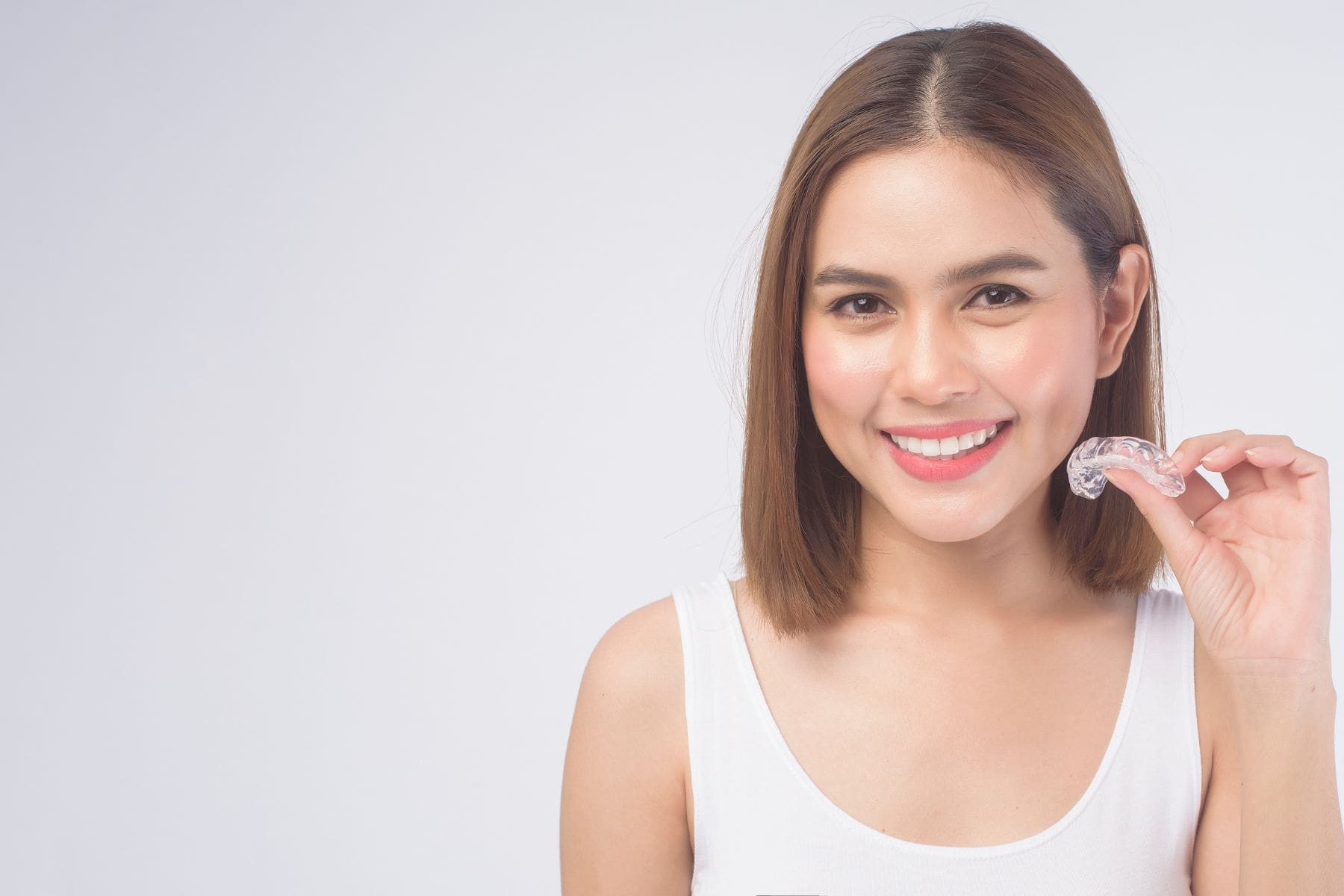
What are the advantages of Invisalign over tradition fixed braces.
The main benefit of Invisalign is the superior aesthetics it offers over traditional braces. The aligners are barely visible and most people won’t notice that you are wearing them.
In addition to the aesthetic benefits, Invisalign is also generally more comfortable then fixed braces. The forces placed on the teeth are lighter and the aligners are nice and smooth compared to fixed prices.
Breakages are rare with Invisalign and this may be in part because the aligners are removed for eating where fixed braces cannot be. Cleaning is also easier with Invisalign as the aligners are removed for cleaning in contrast to fixed braces where cleaning has to be worked around appliance.
What are chewies?
Aligner chewies are small cylindrical foam or rubber-like accessories used during Invisalign treatment. They play a role in ensuring proper seating and fit of the aligners on the teeth. The primary purpose of aligner chewies is to help fully seat the aligners against the teeth. When you put on a new set of aligners, chewies helps improve the fit and ensure the aligners are appropriately seated.
You can bite and chew on the chewie for a few minutes in different areas of your mouth to ensure all areas of the aligners are properly seated. Using chewies can help in achieving a more precise fit of the aligners.
- They aid in seating the aligners fully over the teeth, which promotes effective tooth movement and can reduce the chance of air gaps between the aligners and the teeth.
Is Invisalign more expensive than fixed braces?
You might be surprised to learn that there is very little difference in the cost between traditional fixed braces and Invisalign.
I change aligners every week, do I have to come to the clinic every week?
No. We will normally give you 6-8 aligners to take home and work through yourself, changing them every week. We are of course more than happy to see you sooner if there are any problems.
What if my child doesn’t wear their aligners?
If the aligners are not being worn 21 hours per day, they will not work. There may be a possibility of switching to an alternative treatment if things don’t work out, and Invisalign will sometimes refund the lab fee as a way of guaranteeing the treatment
Why do most teens have metal braces?
Some children are eligible for NHS orthodontics, which is almost always done with fixed metal braces. The use of Invisalign on teenagers is increasing rapidly and is, in many cases, the preferred treatment option.
What are the benefits of Invisalign teen over traditional fixed braces?
Invisalign aligners are more discreet and comfortable than fixed metal braces. As the aligners are removed, children can eat normally and brush their teeth normally. In contrast, eating and cleaning must be done around fixed metal braces, which increases the chance of brace breakages and inadequate oral hygiene.

